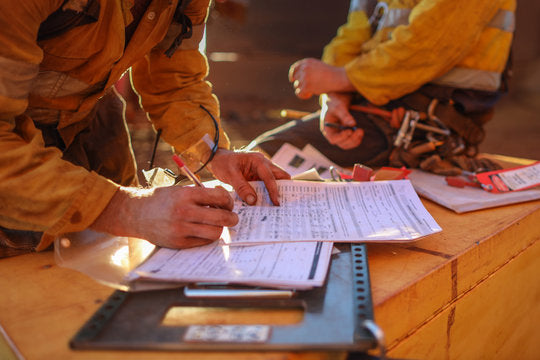ROAR Training Solutions
MSMPER200 - Work with Issued Permit
MSMPER200 - Work with Issued Permit
Couldn't load pickup availability
Course Title: MSMPER200 - Work with Issued Permit
Target Audience: This course is suitable for workers across various industries, particularly those involved in high-risk activities such as hot work, confined space entry, electrical maintenance, and other specialized tasks. It is designed for those who are required to work within a permit-to-work system and ensures that participants are competent in following procedures, managing risks, and maintaining safety at all times.
Course Description:
MSMPER200 - Work with Issued Permit is a vital safety training course designed for workers in industries that require the completion of specific safety procedures before undertaking high-risk tasks. This course focuses on the safe working practices required when operating under a work permit system, a crucial component of ensuring workplace safety, especially in industries such as manufacturing, mining, construction, and oil and gas.
The course will equip participants with the knowledge and skills to understand, follow, and comply with work permit requirements, ensuring safe execution of tasks that may involve hazards such as confined spaces, hot work, electrical systems, or working at heights. By the end of the training, participants will be able to work effectively within a controlled permit-to-work system, understand the role of safety permits, and ensure compliance with organizational and regulatory safety protocols.
Key topics covered in this course include:
1. Introduction to Permit-to-Work Systems:
- Understanding the purpose and importance of work permits in maintaining a safe working environment.
- Overview of various types of permits commonly used in high-risk environments (e.g., hot work permits, confined space permits, electrical permits).
- The roles and responsibilities of workers, supervisors, and permit issuers within the permit-to-work system.
2. Permit Categories and Types:
- Detailed explanation of different types of work permits, including:
- Hot Work Permits: For tasks involving heat or sparks, such as welding, cutting, and grinding.
- Confined Space Entry Permits: For tasks in confined or enclosed spaces where oxygen levels and atmospheric conditions may be hazardous.
- Electrical Permits: Required for work on or near electrical systems.
- Excavation Permits and Other Task-Specific Permits: Depending on the work environment, there may be other specific permits required.
- Understanding the risks associated with each permit type and the associated safety measures that must be followed.
3. Permit Process and Requirements:
- Step-by-step guide to the process of obtaining, reviewing, and closing out work permits.
- How to review the permit for completeness, ensuring that all hazards have been identified, and controls have been put in place before starting work.
- Ensuring that all necessary safety checks are conducted before the permit is issued.
- Identifying when additional permits or safety measures are required.
4. Responsibilities of Workers Under the Permit System:
- Understanding the worker's role in adhering to the conditions of the work permit.
- Verifying that all safety precautions and control measures (e.g., lock-out/tag-out procedures, ventilation, fire watch) are in place before commencing work.
- How to communicate effectively with supervisors, permit issuers, and other workers regarding permit requirements and safety concerns.
- Recognizing the importance of not proceeding with any task unless the permit is correctly issued and all safety conditions are met.
5. Risk Management and Hazard Control:
- Assessing potential risks associated with the task at hand, including chemical, physical, and environmental hazards.
- Understanding how to implement and verify hazard control measures outlined in the permit, such as personal protective equipment (PPE), emergency procedures, and environmental monitoring.
- Using the permit system to minimize risks and manage high-risk activities safely.
6. Compliance with Safety Regulations and Standards:
- Understanding the importance of adhering to organizational and legal safety standards and regulations (e.g., Work Health and Safety (WHS) laws, industry standards).
- Recognizing the role of the work permit system in ensuring compliance with national and international safety regulations.
7. Permit Completion and Closure:
- Procedures for closing a permit once the task is completed, ensuring all conditions have been met and that the work area is safely returned to normal operations.
- Reporting any non-compliance, incidents, or unsafe conditions encountered during the work process.
- Proper documentation and record-keeping related to the permit system for auditing and compliance purposes.
8. Emergency Response and Permit Revocation:
- Understanding what actions to take in the event of an emergency or if conditions change during the work.
- Procedures for suspending or revoking a permit if safety risks escalate or conditions are found to be unsafe.
Upon successful completion of this course, participants will be fully equipped to work within a permit-to-work system, ensuring that all required safety protocols are followed before, during, and after the completion of high-risk tasks. They will have the confidence to understand, manage, and work under various types of permits and understand their responsibility in maintaining a safe working environment.
Share








